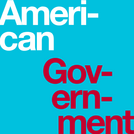
This page lays out the 1936 Constitution of the USSR.
- Subject:
- Government
- Social Studies
- Material Type:
- Activity/Lab
- Homework/Assignment
- Author:
- Bucknell University
- Robert Beard
- Date Added:
- 05/03/2020

This page lays out the 1936 Constitution of the USSR.

Can people of varying ethnic, religious, and national identities ever form one political people based on a common civic identity? Find out on today's podcast. [1:17]

The text of the Reconstruction Acts of 1867. Section one establishes military districts in the South.

A concise look at the governmental structure of Albania including its legislature, executive branch,and judicial structure. You can also find a chart showing the current governmental officials and political parties. Information is from the U.S. State Dept. Background Notes.

This site provides the text of all the amendments to the U.S. Constitution. The first ten are the Bill of Rights.

American Government is designed to meet the scope and sequence requirements of the single-semester American government course. This title includes innovative features designed to enhance student learning, including Insider Perspective features and a Get Connected Module that shows students how they can get engaged in the political process. The book provides an important opportunity for students to learn the core concepts of American government and understand how those concepts apply to their lives and the world around them. American Government includes updated information on the 2016 presidential election.Senior Contributing AuthorsGlen Krutz (Content Lead), University of OklahomaSylvie Waskiewicz, PhD (Lead Editor)





A copy of the original Articles of Confederation presented by Yale Law School. Includes Thomas Jefferson's written discussion on the Articles of Confederation plus early drafts.

This is the official communications service of the Barbados Government. Besides providing public information to the news media and the people of Barbados, there is also discussion on its government structure, society, history, geography, culture, tourism, and national information.

Presents a chart contrasting the powers of the National government to the powers of a State government. The powers shared by both levels of government are listed below the chart.

Introduction to a learning adventure on the Constitution and branches of government. Students click on their age group icon to find information on which part of the Constitution spells out the powers of legislative, executive and judicial branches of government and what those powers are.

Ben's Guide to the U.S. Government, a service of the Government Publishing Office (GPO), is designed to inform students, parents, and educators about the Federal Government through it's online library, learning adventures, and games.

Find out about the repressive government in Burma. There is a chart that lists the theoretical constitutional government, but there have been no elections since 1990 so the constitution is just a theory right now. Information from the U.S. State Dept. Background Notes. Current to 2007.

This website helps students understand what the Central Intelligence Agency does and how they do it. It provides links to help students learn about the CIA, the various jobs available in the CIA, and how to become a CIA expert. It also provides fun stories and games.

This resource from the CIA World Factbook provides a detailed fact sheet of Saint Peirre. The content covers the French territory's geography, people, government, economy, communications, transportation, military, and transnational issues. It includes images of maps and the flag, as well as photos of the territory. This resource requires Java.

This resource is the CIA's informational page on Albania. It presents information on the background, geography, economy, government, and other aspects of the country.